What is Data Mesh?
Data Mesh is an architectural framework for delivering data as a product in a domain-driven manner. It is a distributed data architecture that permits the controlled exchange of data products between data producers and data consumers.
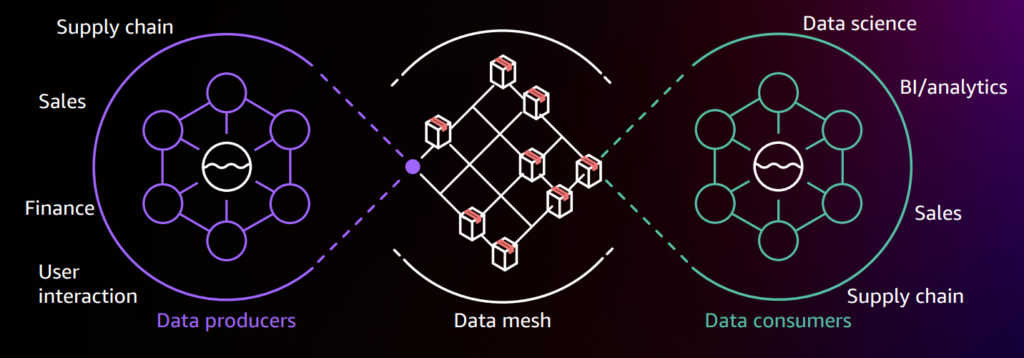
Why Build a Data Mesh?
- Enables organizations to derive value from data on a large scale
- Develop a business-focused data offering that can aid key strategic objectives.
- Support the exchange of data products with the intention of improving the data users’ experience
- Promote data-driven agility
- Remove bottlenecks to enable federated governance across business domains via lightweight centralized policy.
Data Mesh Core Principles
Data Mesh has four core principles as highlighted below
Data Domain Ownership – Data domains are nodes in a data mesh that are included in data lake accounts; it is based on decentralization and assigning data accountability to those who are most familiar with the data.
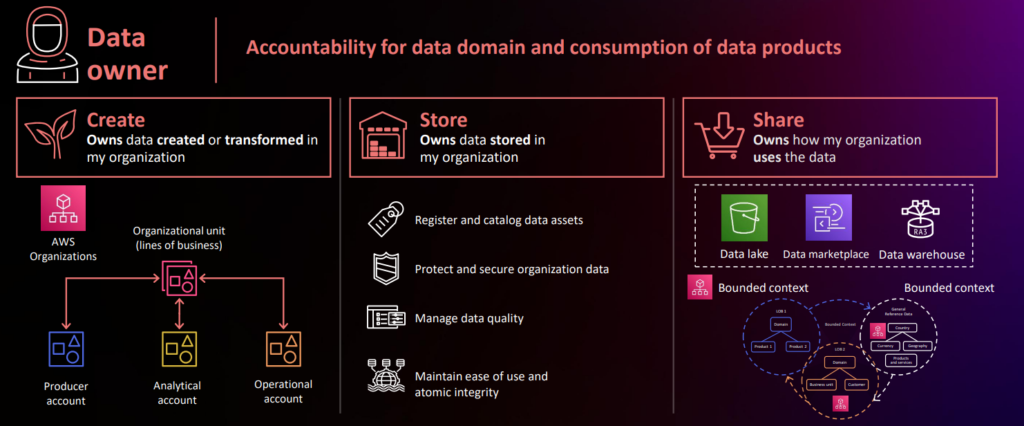
Data as a Product – One or more data products are contributed by a data producer to a central catalog in a data mesh account; DaaP must be independent, discoverable, secure, accurate, and usable.

Federated Data Governance – Federated data governance is the process of sharing data products by providing discoverable metadata auditability based on federated decision-making and accountability structures.
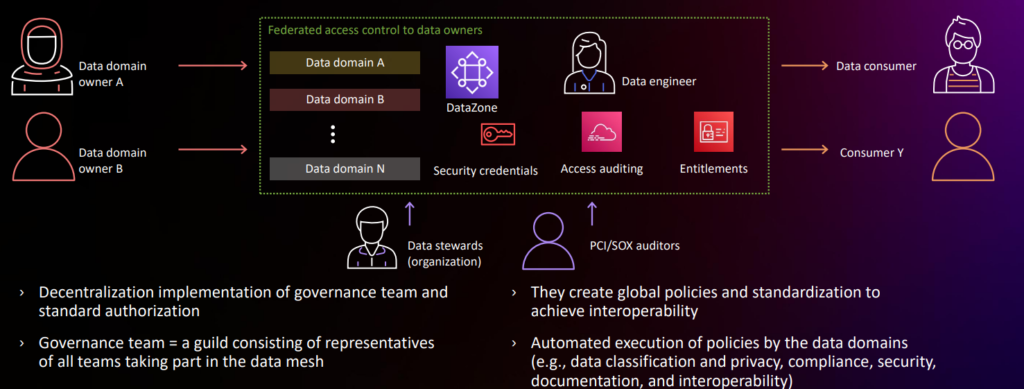
Self Serve Sharing – The platform simplifies the experience of data users in discovering, accessing, and using data products, as well as the experience of data providers in building, deploying, and maintaining data products.
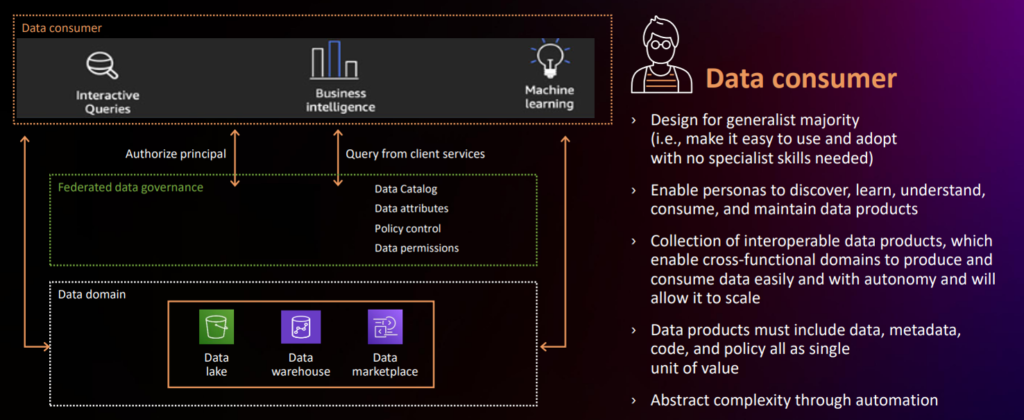
Data Mesh Architecture
A decentralized, lightweight federated governance framework known as “Data Mesh Architecture” promotes regulated sharing among domain-oriented data systems.
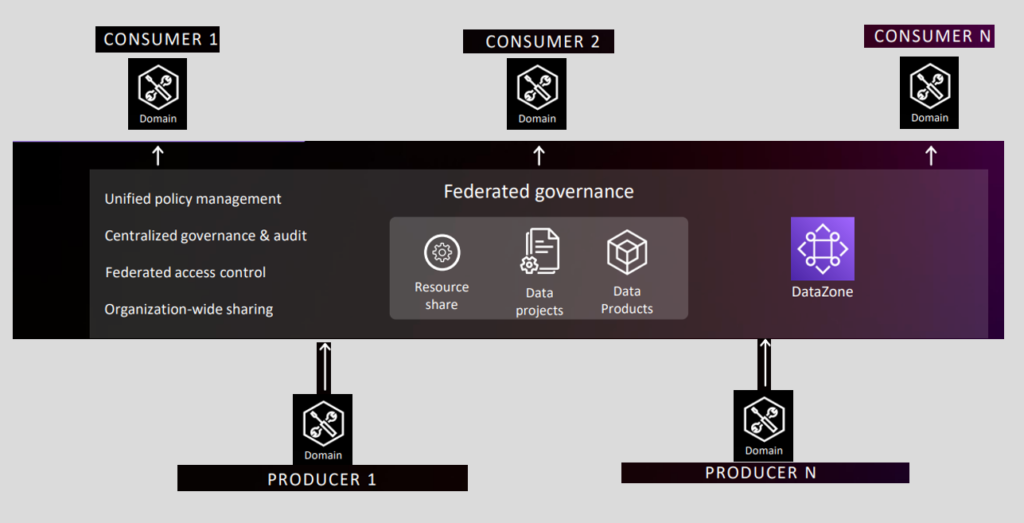

Pingback: data lake vs data mesh • Cloud InfoNow